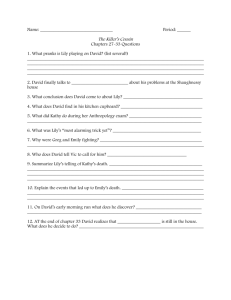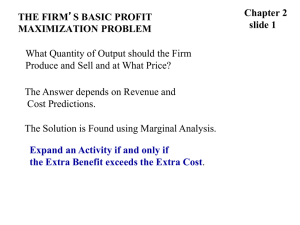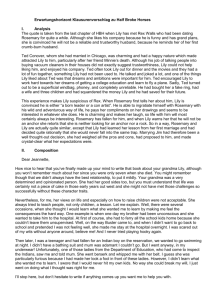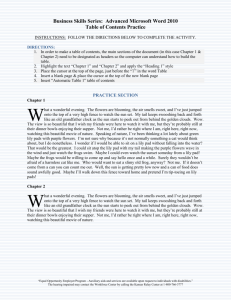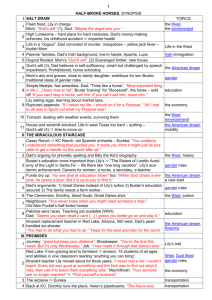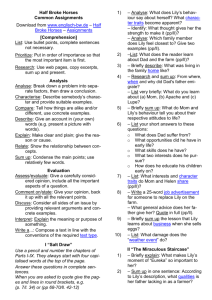Public Finance Homework: Healthcare Economics & Insurance
advertisement
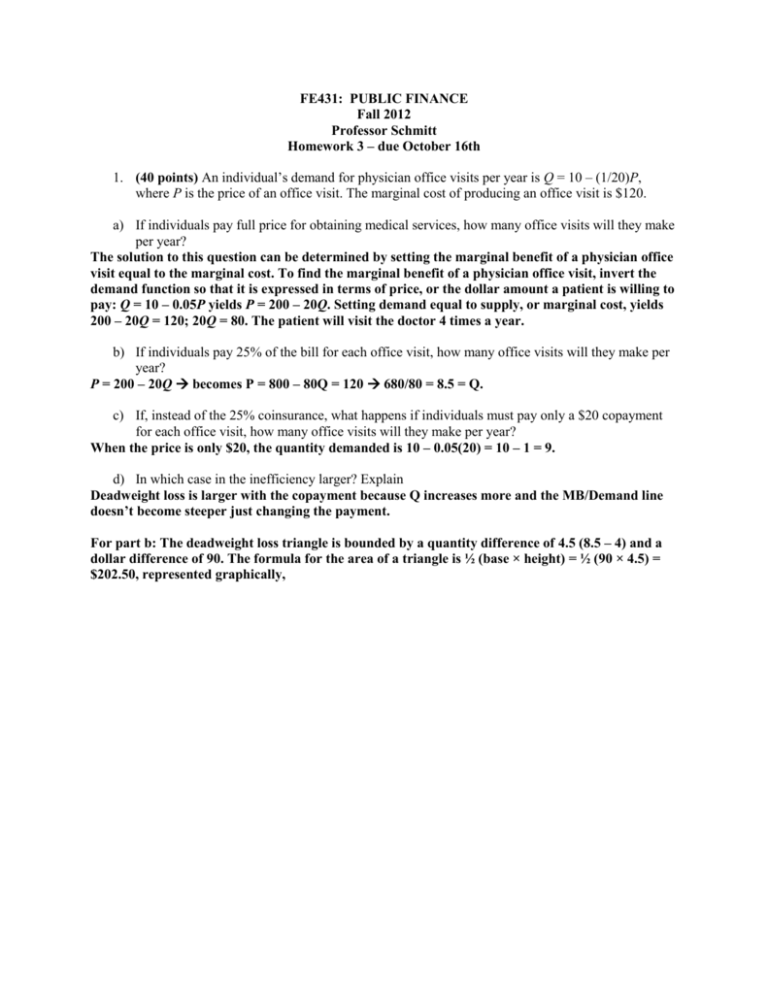
FE431: PUBLIC FINANCE Fall 2012 Professor Schmitt Homework 3 – due October 16th 1. (40 points) An individual’s demand for physician office visits per year is Q = 10 – (1/20)P, where P is the price of an office visit. The marginal cost of producing an office visit is $120. a) If individuals pay full price for obtaining medical services, how many office visits will they make per year? The solution to this question can be determined by setting the marginal benefit of a physician office visit equal to the marginal cost. To find the marginal benefit of a physician office visit, invert the demand function so that it is expressed in terms of price, or the dollar amount a patient is willing to pay: Q = 10 – 0.05P yields P = 200 – 20Q. Setting demand equal to supply, or marginal cost, yields 200 – 20Q = 120; 20Q = 80. The patient will visit the doctor 4 times a year. b) If individuals pay 25% of the bill for each office visit, how many office visits will they make per year? P = 200 – 20Q becomes P = 800 – 80Q = 120 680/80 = 8.5 = Q. c) If, instead of the 25% coinsurance, what happens if individuals must pay only a $20 copayment for each office visit, how many office visits will they make per year? When the price is only $20, the quantity demanded is 10 – 0.05(20) = 10 – 1 = 9. d) In which case in the inefficiency larger? Explain Deadweight loss is larger with the copayment because Q increases more and the MB/Demand line doesn’t become steeper just changing the payment. For part b: The deadweight loss triangle is bounded by a quantity difference of 4.5 (8.5 – 4) and a dollar difference of 90. The formula for the area of a triangle is ½ (base × height) = ½ (90 × 4.5) = $202.50, represented graphically, For part b: P 800 200 MC = 120 DWL 30 4 8.5 Quantity For part c: The deadweight loss triangle is bounded by a quantity difference of 5 (9 – 4) and a dollar difference of 100. The formula for the area of a triangle is ½ (base × height) = ½ (100 × 5) = $250, represented graphically, Price 200 Marginal cost 120 Deadweight loss Co-pay 20 4 9 10 Quantity 2. (30 points) Assume Lily currently has $50,000 which she can spend on “medical care” (M) or “all other goods” (G). If the price of medical care is approximately PM = $200 per visit, while the “price” of a unit of “all other goods” is PG=$100. (NOTE: for simplicity, you can use revenues of 500 and prices of PM = $2 and Pg = $1). Assume Lily’s utility function over M and G is given by U = M*G. a) Calculate how much medical services Lily will buy if she does not have any medical insurance. Show this using an indifference-curve/budget line graph. She will max Utility subject to her budget constraint: U = M*G subject to 2M+G=500 G = 500 – 2M Max M*(500 – 2M) = 500M – 2M2 dU/dM = 500 – 4M = 0 M = 125; G=250 All other goods 500 250 U = M*G 250 125 Medical Care b) Now assume Lily has insurance that provides her with 50% co-insurance. Calculate how much medical services Lily will buy with her co-insurance. Show this using an indifferencecurve/budget line graph. Be sure to illustrate the income and substitution effects of her coinsurance. She will max Utility subject to her budget constraint: Here the BC changes because the effective price is now PM = $100 because Lily has to pay 50% U = M*G subject to M+G=500 G = 500 – M Max M*(500 –M) = 500M –M2 dU/dM = 500 – 2M = 0 M = 250; G=250 All other goods 500 250 U = M*G 250 125 From 125 to X that is the substitution effect From X to 250 that is the income effect X Medical Care 500 3. (30 points) Use the following graph for a Bob’s utility maximizing decision between “all other goods” and “medical care” in the absence of any insurance. 200 All other goods 120 B A C 40 x y U2 UB1 100 400 Medicine a) Now, suppose that the federal government provides Bob with insurance in which he pays 25% coinsurance for medical care. On the graph illustrate the new budget constraint (with numerical intercepts) and show a new combination of Medicine and all other goods. Dashed line (thick dashes) and U2 with point B as the new combination. b) On the graph, show and discuss the income and substitution effects (are these positive or negative and why) of such a grant. 40 to x (point A to point C on the U1) is the substitution effect and it is positive because medical care becomes less expensive Bob will consume more medical care. X to Y (point C to point B) is the income effect and it is positive because the decrease in medical care increase relative income so Bob will consume more medical care as it is a normal good.
